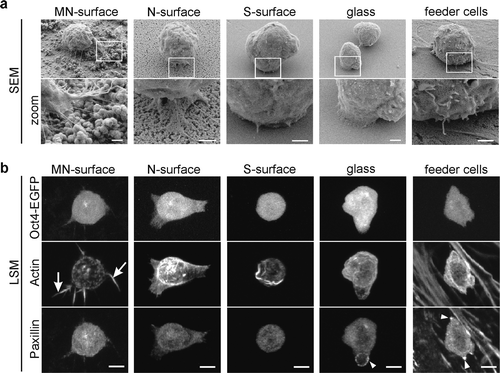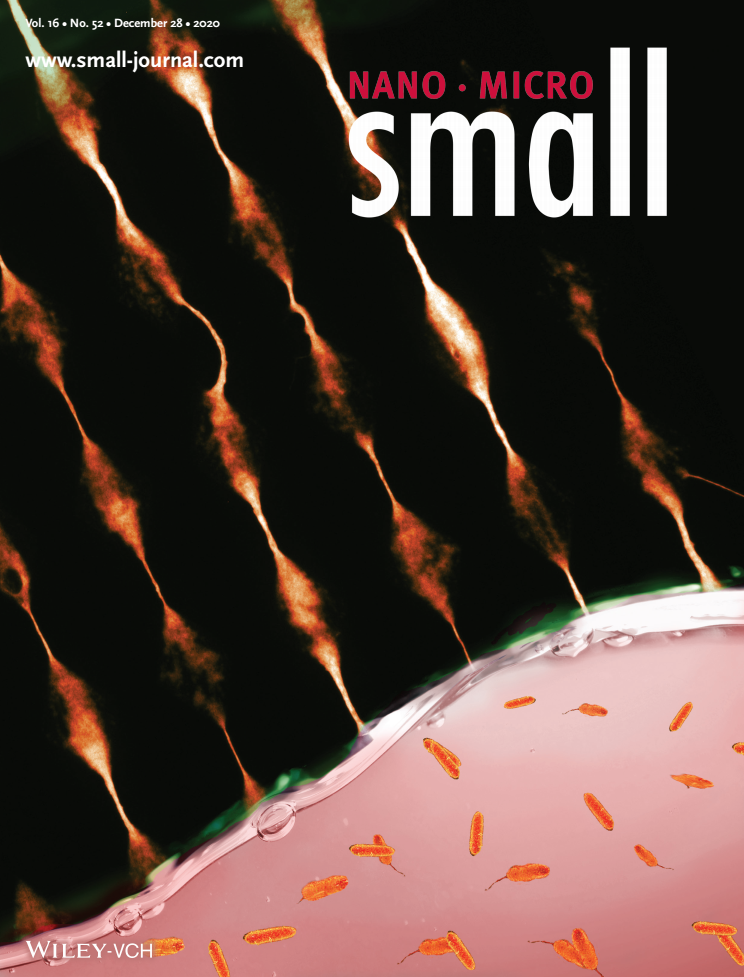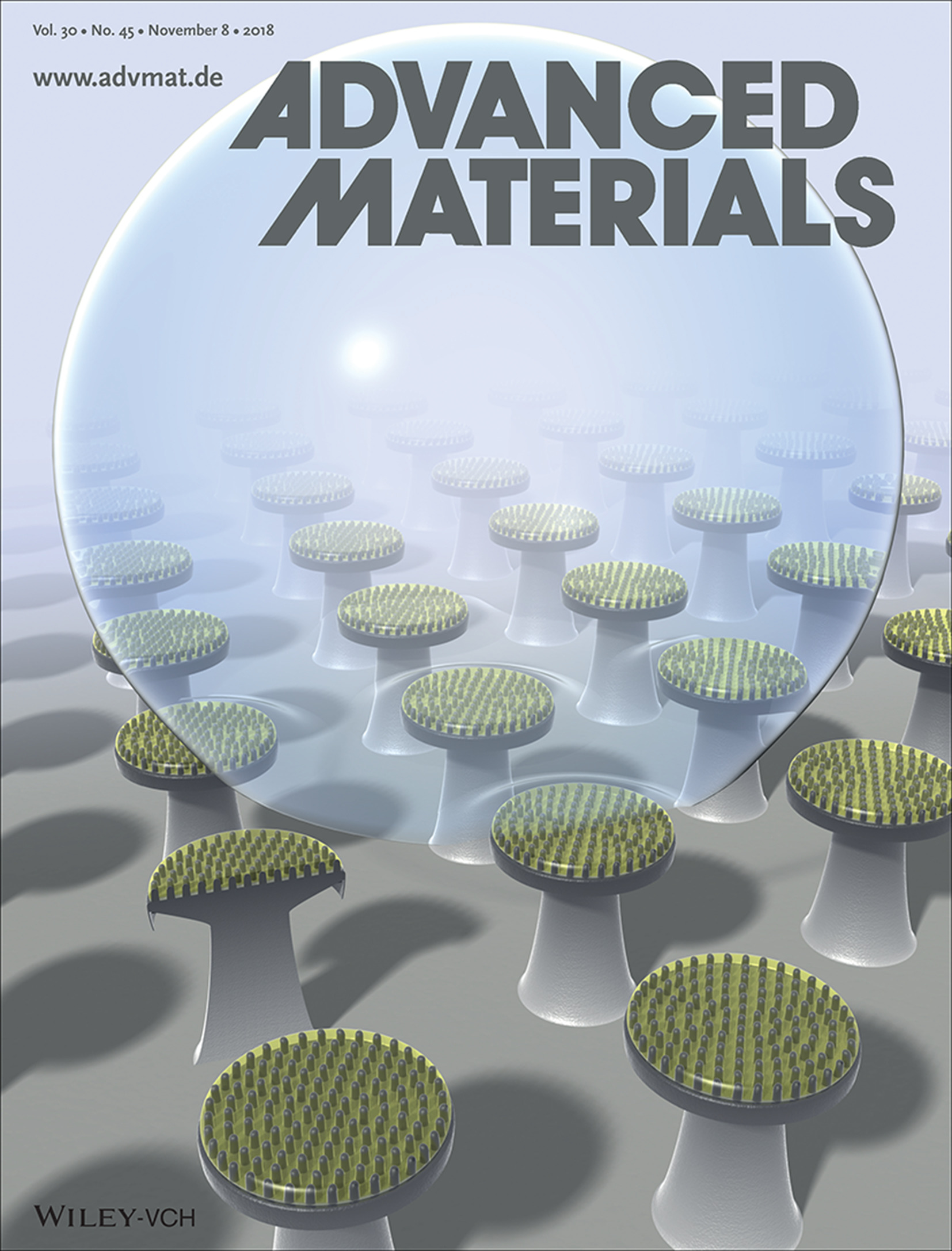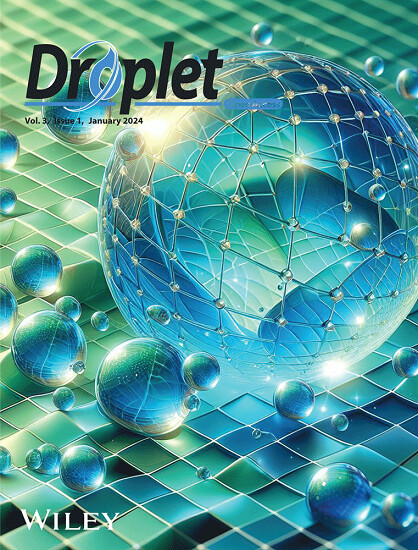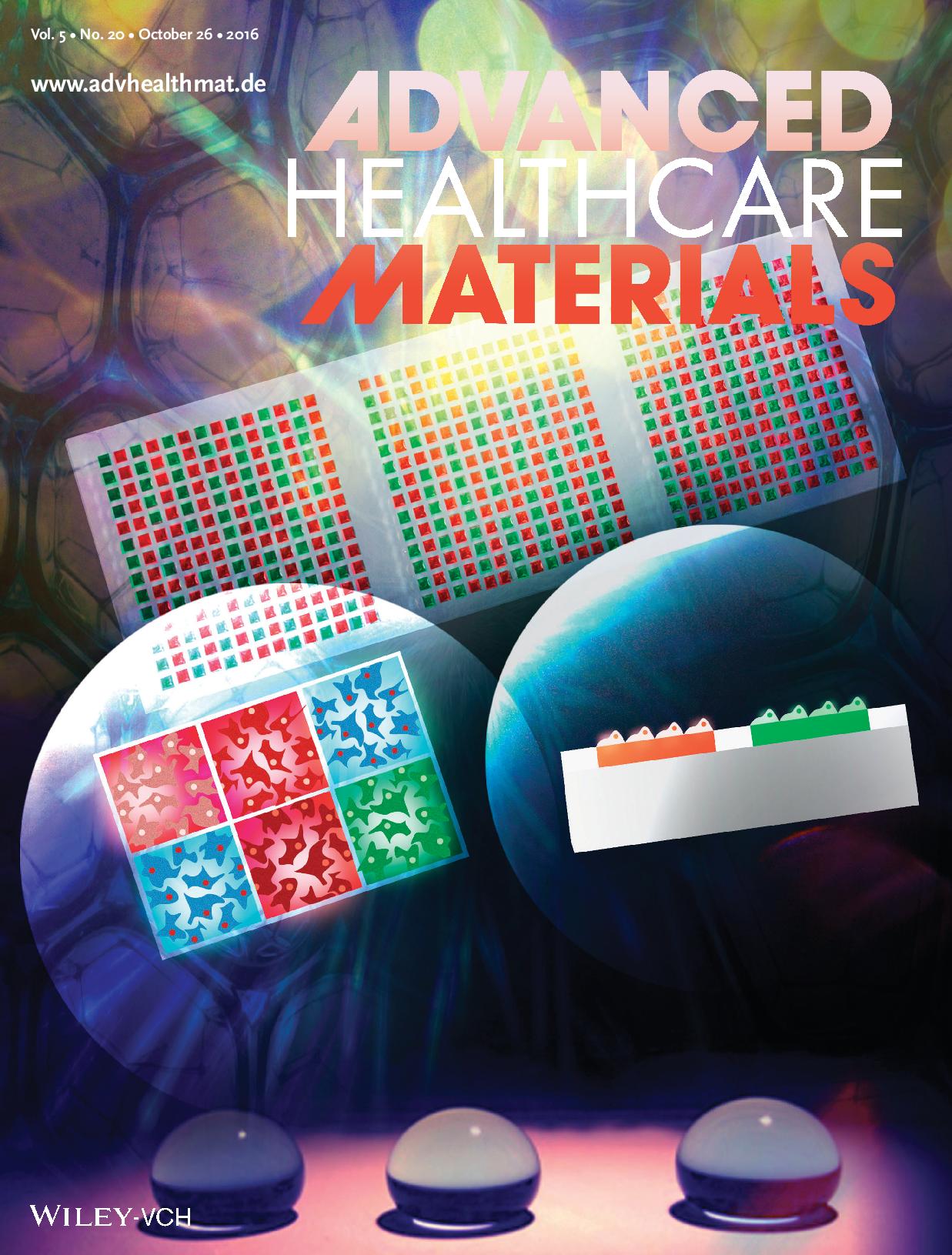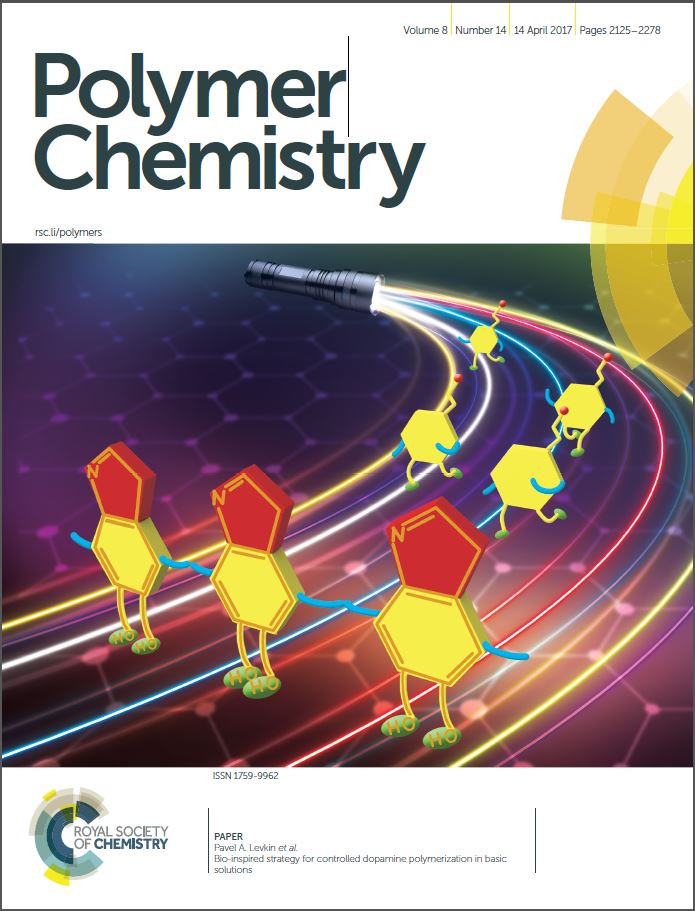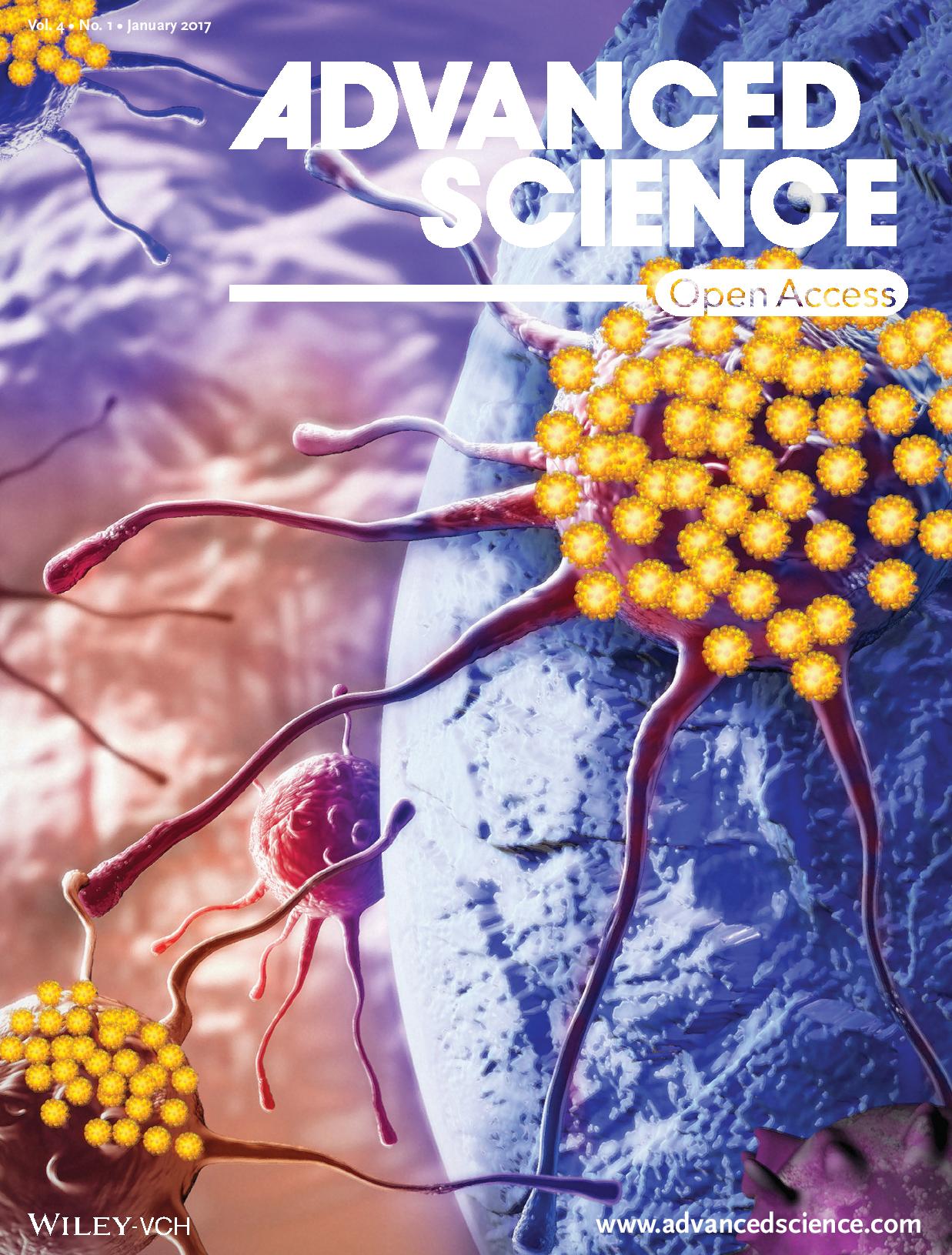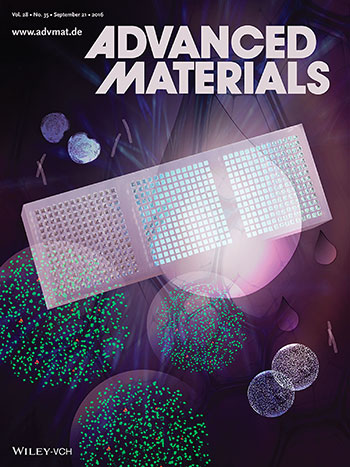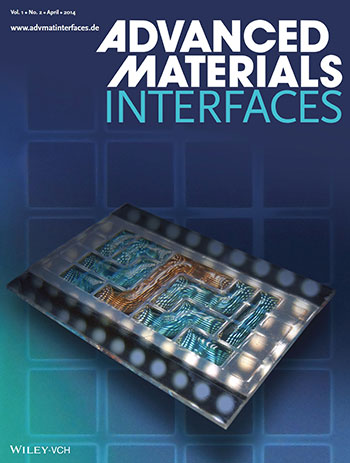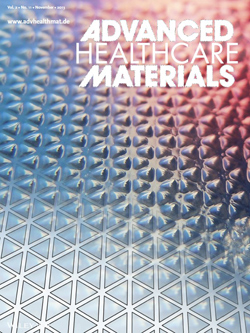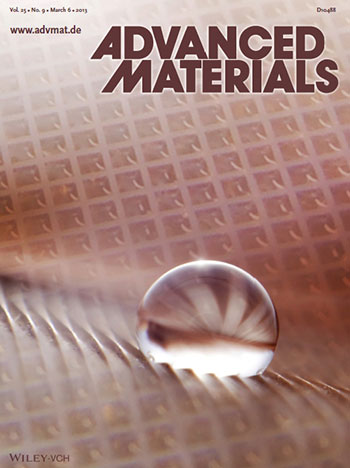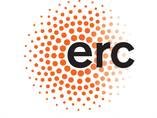51. Hierarchical Micro-Nano Surface Topography Promotes Long-term Maintenance of Undifferentiated Mouse Embryonic Stem Cells
M. Jaggy, P. Zhang, A. M. Greiner, T.J. Autenrieth, V. Nadashkivska, A. N. Efremov, C. Blattner, M. Bastmeyer, P.A. Levkin
Nano Letters, 2015, 15, 7176-7154
Understanding of stem cell–surface interactions and, in particular, long-term maintenance of stem cell pluripotency on well-defined synthetic surfaces is crucial for fundamental research and biomedical applications of stem cells. Here, we show that synthetic surfaces possessing hierarchical micro-nano roughness (MN-surfaces) promote long-term self-renewal (>3 weeks) of mouse embryonic stem cells (mESCs) as monitored by the expression levels of the pluripotency markers octamer-binding transcription factor 4 (Oct4), Nanog, and alkaline phosphatase. On the contrary, culturing of mESCs on either smooth (S-) or nanorough polymer surfaces (N-surfaces) leads to their fast differentiation. Moreover, we show that regular passaging of mESCs on the hierarchical MN-polymer surface leads to an increased homogeneity and percentage of Oct4-positive stem cell colonies as compared to mESCs grown on fibroblast feeder cells. Immunostaining revealed the absence of focal adhesion markers on all polymer substrates studied. However, only the MN-surfaces elicited the formation of actin-positive cell protrusions, indicating an alternative anchorage mechanism involved in the maintenance of mESC stemness.
